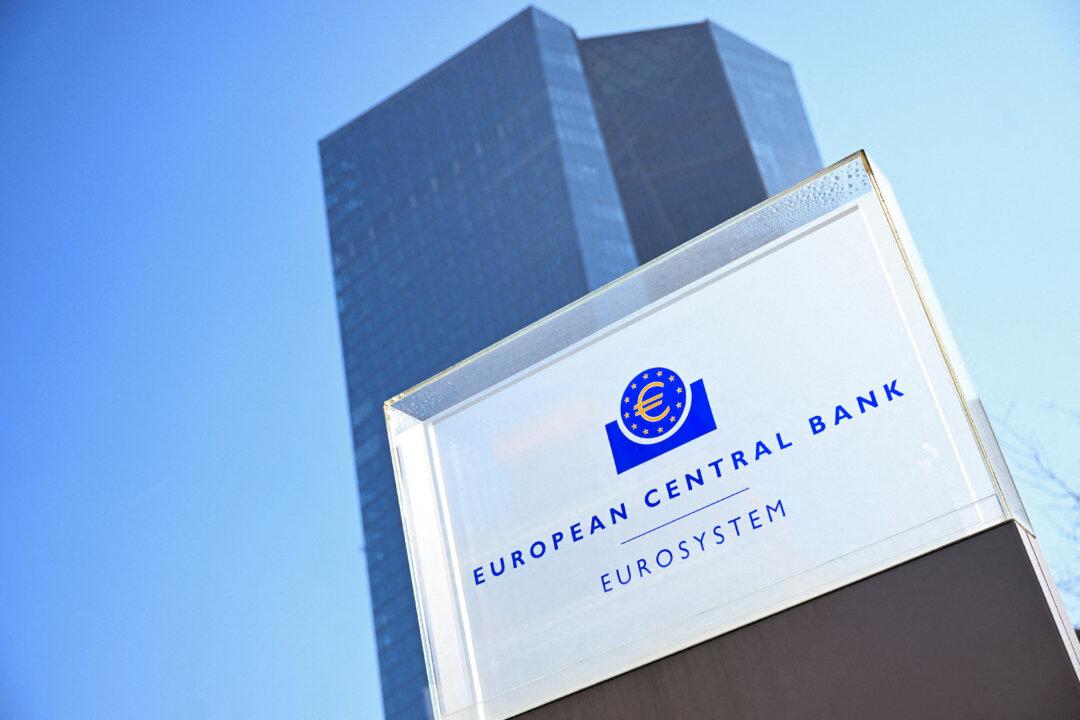A key gauge the Federal Reserve uses to assess the pace of inflation against the central bank’s 2 percent target fell more sharply than analysts expected in July, though it remains at near 40-year highs, suggesting little reprieve is likely from the central bank’s fight to tame inflation by hiking rates.
Market forecasts called for a 4.7 percent pace of growth in the core gauge, which reflects underlying inflationary pressures and is generally seen as the stickier component of inflation.
On a month-over-month basis, the core PCE inflation gauge rose 0.1 percent. That’s well below market expectations for 0.3 percent and a considerable drop from June’s pace of 0.6 percent.
Bitcoin, a risk asset that has performed well on signs of possible monetary easing, rallied sharply after the PCE data were published, though the cryptocurrency later gave back much of the gains as investors digested data form the Department of Commerce, which indicated weaker-than-expected consumer spending, an ominous sign for the economy.
Other risk assets, including stock futures, also rallied briefly on the PCE data, but then reversed course after Fed Chair Jerome Powell spoke at the Kansas City Federal Reserve’s annual monetary policy symposium in Jackson Hole, Wyoming.
Powell reiterated that the Fed is determined to keep hiking rates to tame soaring inflation.
Fed Pivot Coming?
Some analysts reacted to the PCE data with expectations for a faster easing of monetary policy.Hal Press, founder of hedge fund North Rock Digital, for example, said in a statement that he expects further downside for core inflation along with a growing likelihood of a Fed pivot toward looser monetary settings.
“It’s very likely inflation has peaked, and not only has it peaked but it’s also headed to the fed’s target. Pivot coming IMO,” he wrote in a statement on Twitter.
Gary Black, managing partner at The Future Fund, expressed a similar sentiment.
“Fed clearly looking in rear-view mirror in fighting inflation so aggressively,” he wrote in a statement also on Twitter.
Friday’s inflation data also saw investors boosting their expectations for a smaller Fed rate hike in September.
Moments after the PCE numbers were published, the odds of a 0.75 percentage point rise dropped, to 42.5 percent.
Headline PCE Eases
The headline PCE inflation numbers, which include food and energy, saw even sharper declines, Friday’s data showed.Markets expected the annual pace of PCE inflation to increase, to 7.4 percent in June from the prior month’s 6.8 percent. Instead, July’s figure came in at 6.3 percent.
In month-over-month terms, headline PCE inflation came in at minus 0.1 percent, signaling short-term price deflation.
Weak Consumer Spending
Behind the relatively rosy inflation picture provided by the PCE data, there was softness in consumer spending.Consumer spending, which accounts for more than two-thirds of U.S. economic activity, inched up 0.1 percent last month, Friday’s data showed.
Consensus forecasts called for a 0.4 percent gain in consumer spending, with some analysts seeing this as an ominous sign for the economy.
“The growth in real personal spending is trending at roughly zero percent. Very strong economy, blah blah,” said Alfonso Peccatiello, former portfolio manager for ING Deutschland and now author of the Macro Compass, in a statement.
Besides being weak in its own right, the consumer spending data also signal that the Fed is determined to raise rates to tamp down inflation, even if it means pushing the U.S. economy into a recession, Peccatiello suggested.
“Now, are you ready to hear Powell tell us the Fed will keep rates at 3.5 percent or higher even in a recession? They won’t stop until the inflation dragon has been properly slayed,” he argued.
Recessionary risks have mounted as the Fed has moved to tighten monetary policy aggressively to bring down inflation. At the same time, there has been cautious optimism that the central bank could slow the pace of its rate hikes if inflation continues to moderate, with the post-PCE data repricing of fed funds futures contracts reinforcing the rosy view.
Still, inflation remains a serious concern, and Powell’s speech made that clear, with the central bank chief appearing eager not to send dovish signals to markets.
Last year at roughly the same time, Powell insisted that the inflationary jump would likely be “transitory,” a prediction he later acknowledged was wrong.

Some analysts expected Powell would reinforce that stance in his much-anticipated speech in Jackson Hole.
“A likely scenario is that he will endorse the retightening of financial market conditions and thus also the trend toward higher market rates of late, given that the Fed still is a stretch away from getting inflation under control,” they said.





